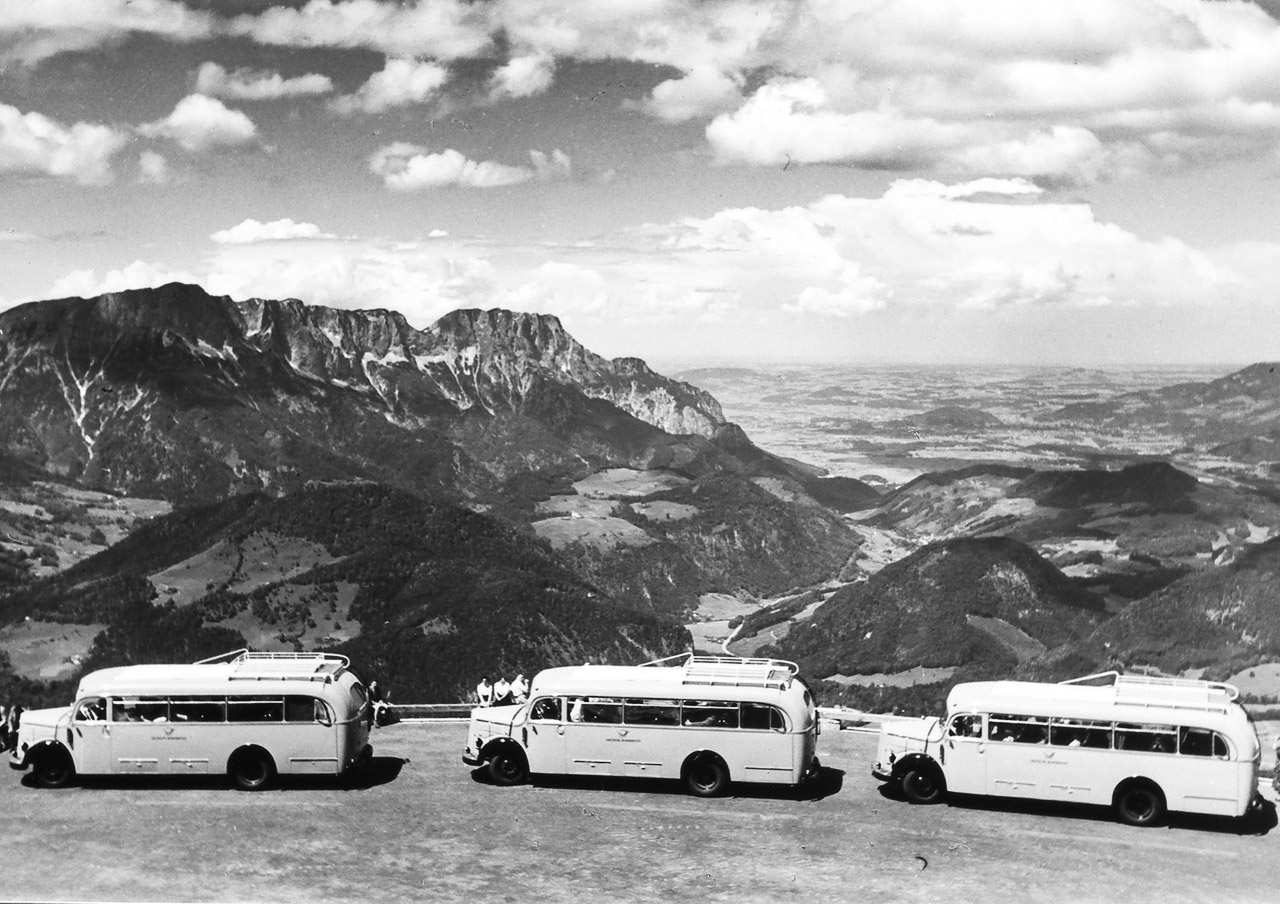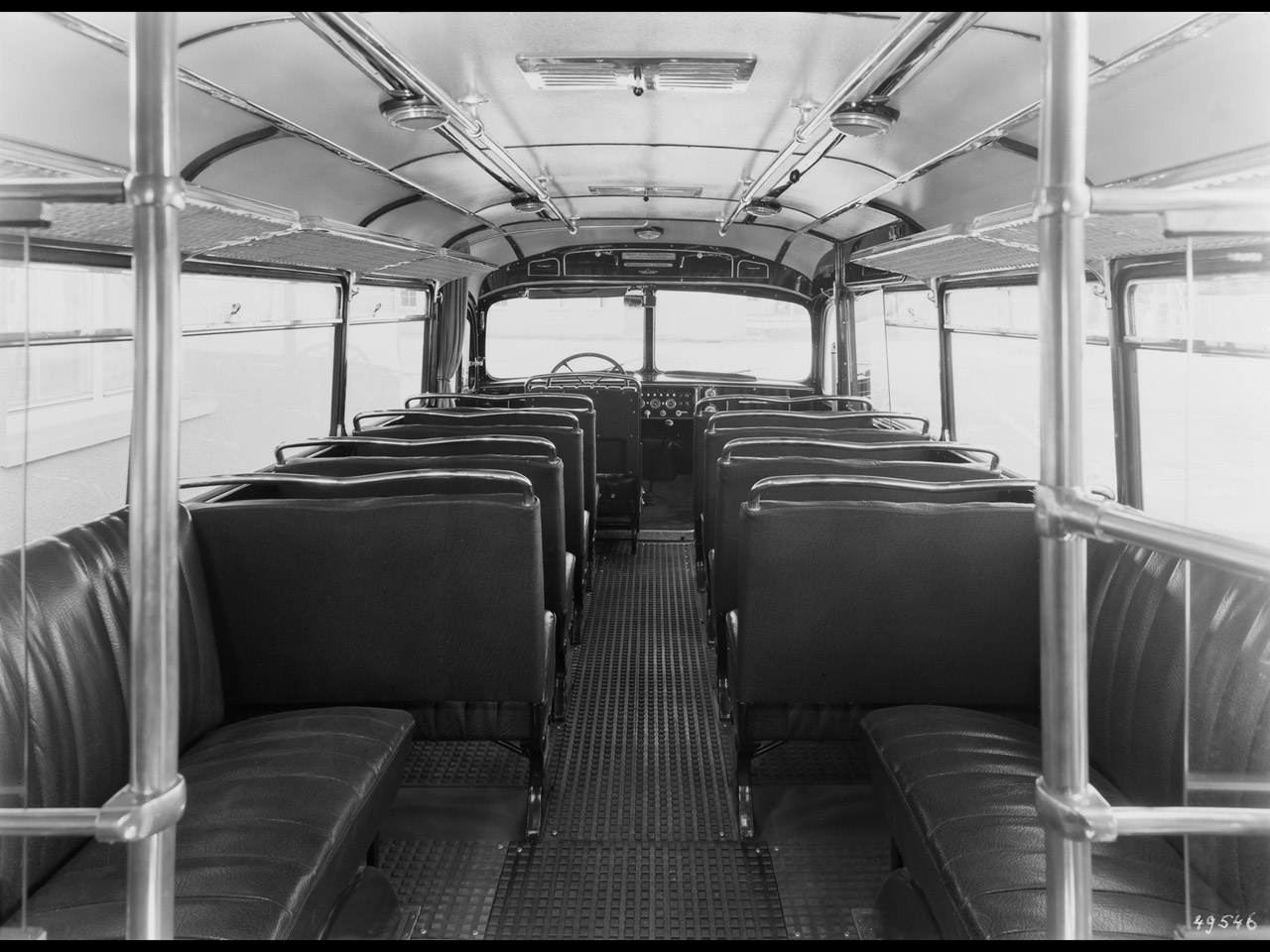Mercedes-Benz O 3500
(from
DaimlerChrysler Press Release) It
almost sounds like a Christmas tale, but if the stories handed down
through the generations are to be believed, the legendary
Mercedes-Benz O 3500 did indeed celebrate its premiere on December
24, 1949. With this compact conventional bus, the then Daimler-Benz
AG set itself a very special Christmas present: in next to no time,
the O 3500 became the most successful bus in its day and age.
classic chassis design with a low frame
The first newly developed post-war bus with the three-pointed star
was based on the L 3500 truck launched at the same time. And just
like this truck, the bus had a somewhat lighter predecessor – the O
3250 (L 3250) – for a short period in the summer of 1949. Due to the
family relationship with the truck, the Mercedes-Benz O 3500 had a
diesel engine installed at the front, under a conventional hood. The
design principle of load-carrying chassis with separately
manufactured body fitted at a later stage was equally conventional.
However, the chassis for the O 3500 featured a particularly low
frame to give passengers a conveniently low entrance height.
Mannheim’s first step towards becoming a bus plant
Until then, bus bodywork
had been built at the Sindelfingen plant of Daimler-Benz AG – the
“made in Sindelfingen” label was regarded as a seal of quality. The
Mercedes-Benz O 3500, by contrast, was manufactured in Mannheim,
thereby launching Mannheim as the bus plant which continues to
produce Mercedes-Benz buses to this day.
Just a few years after the end of World War II, the new O 3500
signified a turning point. Designed as a touring coach, it
documented the end of the post-war period by responding to the
desire to travel and to go on vacation. Many people spent their
first holidays on board this coach, traveling across the Alps to
Lago di Garda or to Switzerland. The touring coach version of the O
3500 featured generous glazing of the roof edges, allowing
passengers to enjoy the view. A sliding roof over two-and-a-half
meters long extended across almost a third of the vehicle’s overall
length of 8.6 meters, letting in fresh air and sunlight. And lavish
chrome trim combined with the popular two-tone finish – in red and
black for instance – also underlined the beginning of a new era.
Smooth pre-chamber diesel engine with 90 hp
In the O 3500, the
passengers in the 29 regular seats plus seven folding seats along
the center aisle plus an occasional seat next to the driver had all
the time in the world to enjoy the scenery outside as the coach
traveled at the sort of leisurely top speed that was customary at
the time: 82 km/h. The well-known OM 312 diesel engine worked under
the long hood; with its further developed versions, it also acquired
the status of legend in later years. The six-cylinder pre-chamber
engine developed 90 hp from its 4.6 liter displacement. This is why
the O 3500 is also known as the “Ninety” among connoisseurs. Typical
features of this engine, which had its origins in a gasoline engine
used in the licensed production of the Opel Blitz during and shortly
after the war, were its high levels of flexibility and smooth
running characteristics. The engine’s power was transmitted to the
rear axle by a five-speed constant-mesh gearbox.
Luggage was stowed away in a rear-end compartment behind the rear
seat bench, accessible behind two hinged doors. Additional small
stowage compartments along the sides at floor level were optionally
available. Since luggage space was rather on the short side, the
Mercedes-Benz O 3500 coaches were frequently seen with roof-mounted
luggage racks at the rear. Other optional equipment included head
restraints on the double seats in the passenger compartment,
particularly comfortable seats with center armrests and adjustable
backrests, folding tables in the backrests and even single seats.
The O 3500 had been designed with easy handling and comfort in mind
if you are to believe the contemporary brochures: “Alongside
outstanding spaciousness and economy, the O 3500 excels in speed,
easy maneuverability, dynamism and suspension quality – at levels
previously only encountered in large passenger cars.” The
advertising also expounded on the elaborate heating system and the
ventilation with blower support in the O 3500: “As a result, you
feel well and comfortable at all times, be it summer or winter.”
Family of touring coaches, country and urban buses
The compact O 3500
rapidly developed into a complete family of touring coaches, country
buses and regular-service urban buses. From 1954, the line-up was
complemented by a version with an additional seat row amounting to
an extra 280 millimeters in length. While passengers boarded the
touring coach through two hinged doors, the urban bus had a sliding
door at the front and an inward-folding door at the rear, both
already operated by means of compressed air. In the area of the rear
seats of country bus and touring coach, the urban bus had a platform
for 13 standing passengers.
The original Mercedes-Benz body on the chassis of the O 3500 was
soon complemented by a large number of individualized bodies
designed and manufactured by bodybuilders in and outside Germany.
Another chassis popular among bodybuilders was the OP 3500 (P =
Pullman) available from 1953, with the driver’s seat moved forward
to a place alongside the engine and serving as the backbone for
elegant cab-over-engine vehicles.
The most successful bus of its day and age with over 6,000 units produced
The versatility of the compact Mercedes-Benz O 3500 accounted for the vehicle’s great success in sales: between December 1949 and the discontinuation of production six years later, 6,049 units came off the assembly lines in Mannheim; of these, 2,644 were completely built-up buses. From the fall of 1953 until early 1961, precisely 1,675 chassis of models OP 3500 and its successor, the OP 311, were produced. The Christmas bus of 1949 thus became the most successful bus of its day and age.



